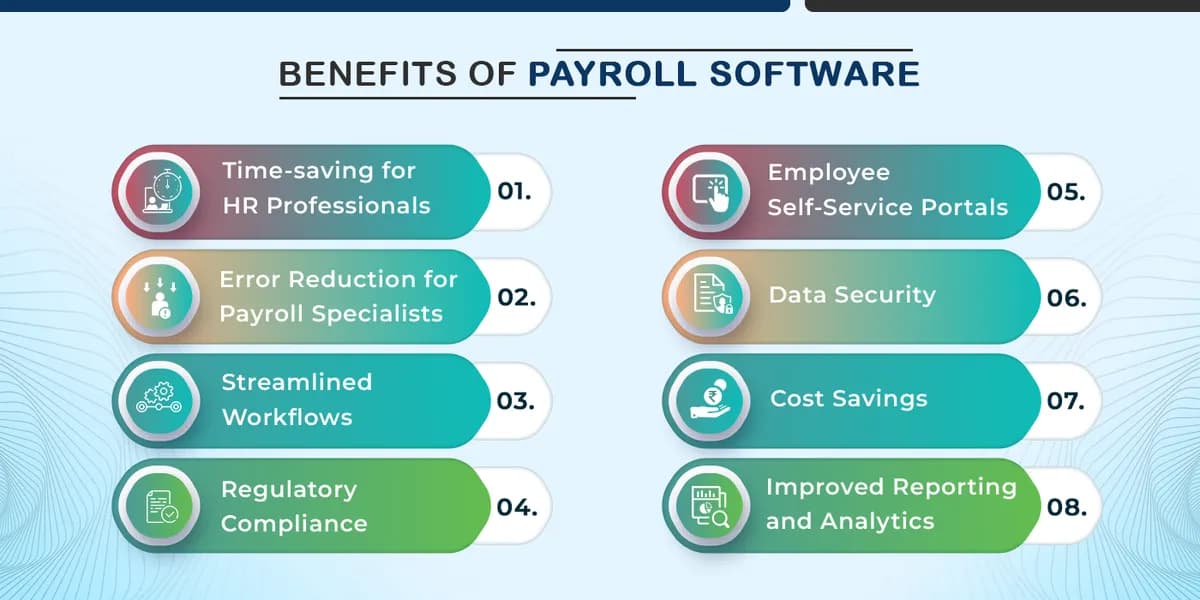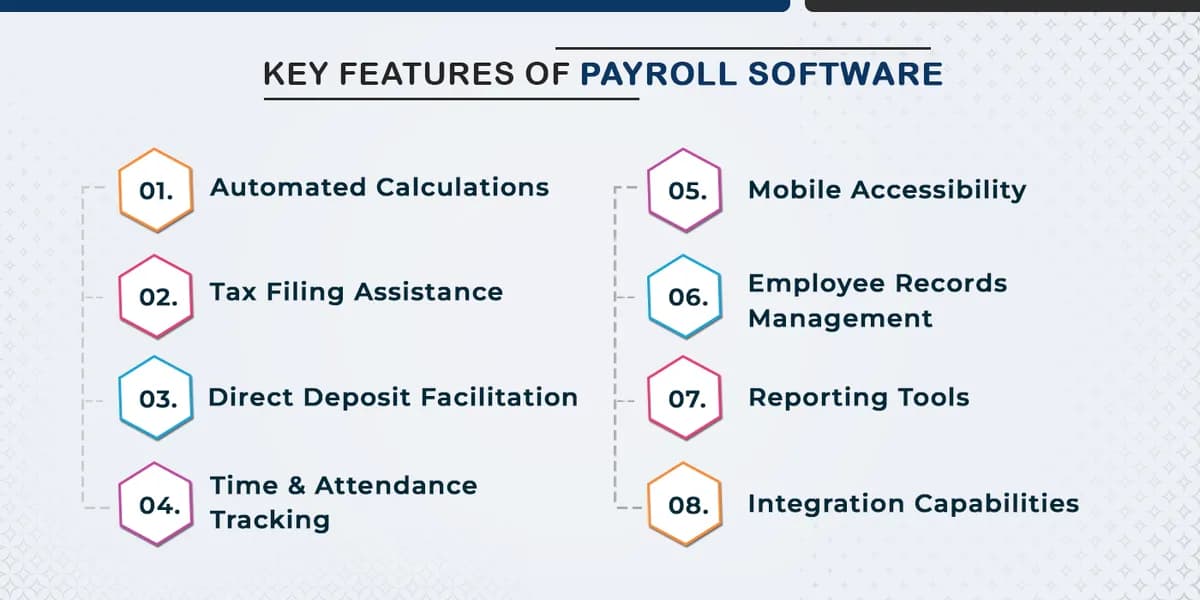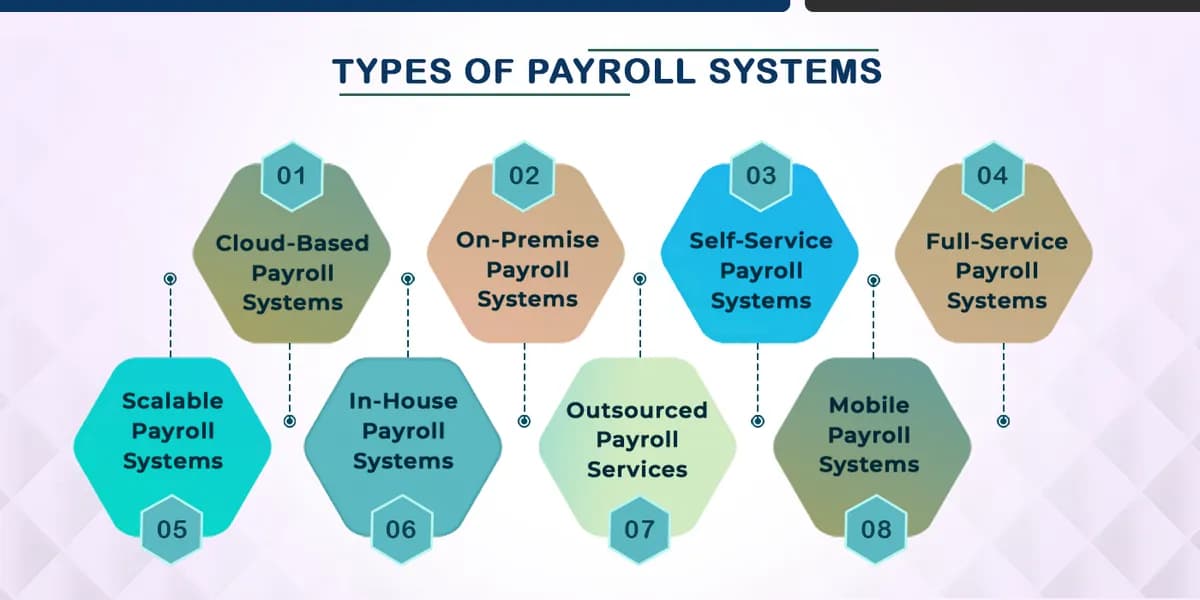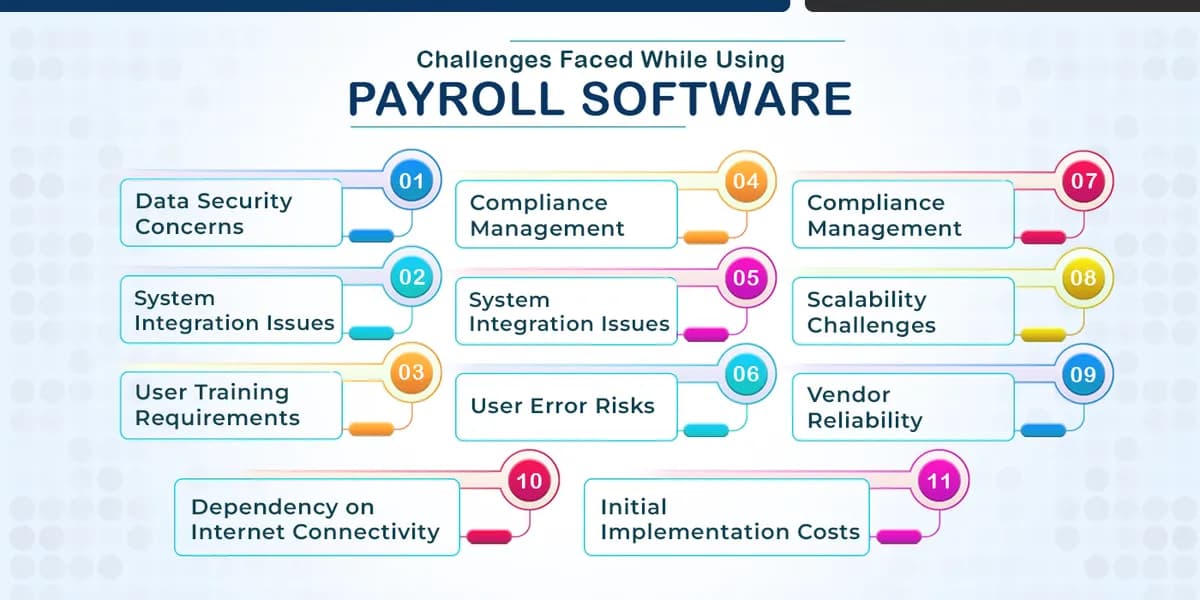Find the Payroll Management Software in India
We're here to assist!
20 Best Payroll Software in India - Features, Pricing and Reviews
Description:
Spine HRMS is an HRMS and payroll software that meets all your payroll and human resources requirements. It is an easy to use software and handles employee remuneration, deductions, filing of returns, and much more.... View Spine HRMS Profile
Description:
eliteHRMS is an advanced type of human resources payroll software that involves a mix of HR functionalities alongside the regular-style payroll management process. It provides an all-in-one solution for managing employee records, payroll processing, and performance tracker on a single platform that improves the accuracy of data processed reducing administrative workload.... View eliteHRMS Profile
Description:
ZimyoHR is a payroll system for cloud computing. It helps organisations and companies to ease their payroll operations. It eliminates time-consuming activities and guarantees accurate computation of salaries and taxes. ... View ZimyoHR Profile
Description:
greytHR is a best HR Software for your Business. It is a cloud based platform that brings simplicity, speed and exceptional efficiency to all HR operations and payroll processes. greytHR is the first choice HR platform for businesses across India. Today, greytHR serves 20 lakh+ employees in 20,000+ companies across 250+ cities, making it the undisputed leader in HR technology in India. Using aut... View greytHR Profile
Description:
HR Mangtaa is HRMS & payroll software that can effectively assist businesses in organising employee wages and other payroll-related activities. It performs calculations, reporting, compliance, and much more to reduce time and expenses.... View HR Mangtaa Profile
Description:
HROne HRMS makes payroll processing easy. It ensures you pay your employees the right salary at the right time. This best payroll software makes easy even the most complicated pay rules and compliance requirements for efficient payroll. ... View HROne HRMS Profile
Description:
BambooHR payroll solution has simple and easy-to-use payroll tools that help the business in calculating payroll, remunerating employees, paying taxes and preparing for reports. Payroll services are now easier and more efficient when using this payroll & HRMS solution.... View BambooHR Profile
Description:
Qandle is payroll management software that helps to make the process of handling payroll for organisations as smooth and easy as possible. It helps in automating the processes of calculating paychecks, tax payments, and reporting among others.... View Qandle Profile
Description:
Beehive HRMS Solution is a software program that helps companies manage their human resources. It is a cloud-based system that runs on Microsoft Azure servers, making it easy to use for companies. The software offers a variety of features to manage HR tasks efficiently. For example, it provides Task and Timesheet Management to track projects, and an Employee Self-Service option to simplify tasks s... View Beehive HRMS Profile
Description:
Using HRM App (e-Attendance, Payroll & Meetings) by TDI Online Services, you can manage your office attendance, manage the in-out TIME, leave, and salary records and the same can be accessed by the employees with a tap.... View TDI - HRMApp Profile
Description:
Smartoffice365 is a cloud-based attendance and for enterprises. With it, HRs can standardize payroll-related revisions, bonuses, deductions, reimbursements, arrears, and more, besides processing salary calculations in an accurate manner. Further, the dedicated ESS portal within the particular, allows employees to manage their documents, reimbursements, and leave applications all by themselves.... View Smartoffice365 Profile
Description:
Legato HRMS is a comprehensive HRMS developed for Startups, SMBs, SMEs, and Agencies. This Web-Based application has a simple UI and is straightforward to use. Legato HRMS is compatible with Desktop and offers end-to-end solutions for Windows operating systems. Legato HRMS HR Software aids in Dashboard, Employee Management, Project Management, and Calendar management. ... View Legato HRMS Profile
Description:
Gusto HR is a web-based application for businesses that allows companies to manage new hires and support existing staff. In addition to personalised offer letters and payroll scheduling capabilities, the platform provides adjustable onboarding checklists. Within Gusto HR, managers may compute an individual team's working hours, time off, and applied leaves. ... View Gusto HR Profile
Description:
Officenet HR Solution delivers world-class cloud and on-premise HR cum payroll solutions to leading organizations on a PAN India basis. Officenet It includes a variety of features ranging from leave, attendance, payroll, recruitment, performance appraisals, and employee life cycle management. Simplify the tasks of the HR Executives.... View Officenet Profile
Description:
Scayles Payroll & Compliance Software Payroll Management Software helps with Statutory compliance & management,Document Management,Leave Management and Payslips & Reports. It also assists in Bulk Transactions,Employee Lifecycle Management,Automatic Updates and Data Import/Export.Here are some of the most common features of Scayles Payroll & Compliance Software... View Scayles Payroll & Compliance Profile
Description:
Accuera is CLOUD BASED TIME ATTENDANCE / ACCESS CONTROL HUMAN RESOURCE / PAYROLL SOLUTION... View Accuera Time & Attendance Profile
Description:
T & H is a very visionary people company that is always working on new innovations and sustainable events, and all of the team members are very self-motivated.... View T&H Payroll Profile
Description:
ADP provides all aspects of human capital management in a single, simple solution. Nothing is more frustrating than knowing you have problems to solve but not knowing where to begin. Begin with us. We like to roll up our sleeves and get our hands dirty. Human Capital Management's complexity has been simplified. ADP provides all aspects of human capital management in a single, simple solution. Noth... View ADP HCM Profile
Description:
FlexiEle HRMS is a feature-rich human resource management system. It enables organizations to manage their workforce in a more seamless and efficient manner. This HRMS software provides automated attendance management, payroll calculation, and other benefits to human resource teams. It enables HR teams to concentrate on employee management while being supported by business intelligence and analyti... View FlexiEle HRMS Profile
Description:
Workrig is an industry leader in assisting organisations in transforming their workspace. The HRMS software is critical to all workforce management functions performed by the organization, including but not limited to:This enables organisations to efficiently monitor their projects and portfolios. It aids in the management of project documentation, tasks, and schedules, as well as the generation o... View Workrig Profile
What is Payroll Software
Payroll software plays a crucial role in modern businesses, simplifying the intricate processes tied to employee compensation. Essentially, it's the go-to solution for managing tasks like employee payments, ensuring tax compliance, and keeping financial records in check. This automation not only saves time but also minimizes the chances of errors in salary calculations and tax filings.
While running a business accuracy is non-negotiable, payroll software steps in to handle calculations flawlessly. By adopting this technology, businesses can boost efficiency, uphold compliance standards, and allow HR professionals and payroll specialists to focus on more strategic aspects of their roles.
Importance of Payroll Software in a Business
For every business irrespective of its size, payroll software serves as a critical tool for efficient and accurate payroll management. Traditional manual approaches to payroll processing often lead to challenges such as human errors in calculations, time-intensive payment processing, and the complexities of adhering to evolving tax regulations.
The implementation of payroll software addresses these challenges head-on. Through automation, businesses experience tangible benefits, including increased accuracy, streamlined workflows, and significant time and resource savings. Beyond efficiency, payroll software ensures cost-effectiveness, allowing for precise and transparent allocation of financial resources.
Incorporating payroll software into your business operations revolutionizes the management of payroll. It effectively mitigates risks, reduces errors, and simplifies compliance management. This technology empowers organizations to redirect their focus towards strategic initiatives while entrusting the intricate details of payroll management to a dependable automated system.
The importance of payroll software lies in its ability to deliver concrete advantages—enhancing accuracy, efficiency, and compliance, ultimately contributing to the overall success and sustainability of a business.
Benefits of Payroll Software
The benefits of payroll software extend across various aspects of business operations, catering to the unique needs of different stakeholders.
Time-saving for HR Professionals:
Payroll software significantly reduces the time required for manual payroll processing. Automated calculations, tax deductions, and payment disbursements allow HR professionals to allocate their time to more strategic and value-added tasks.
Error Reduction for Payroll Specialists:
Automated systems minimize the risk of human errors in payroll calculations. This not only ensures accurate employee payments but also eliminates the need for time-consuming error corrections.
Streamlined Workflows:
Payroll software streamlines the entire payroll process, from data input to report generation. This efficiency results in smoother workflows, reducing the administrative burden on the payroll team.
Regulatory Compliance:
Staying compliant with tax regulations and other legal requirements is simplified with payroll software. Automated updates ensure that the system remains current with the latest regulatory changes, reducing the risk of non-compliance.
Employee Self-Service Portals:
Many payroll systems provide employees with employee self-service portals. This tool allows employees to check their pay slips, tax papers, and other important documents, reducing the need for HR professionals to reply to everyone's concerns.
Data Security:
Payroll software often includes robust security measures to protect sensitive employee information. This helps businesses comply with data protection regulations and ensures the confidentiality of payroll data.
Cost Savings:
While there is an initial investment in implementing payroll software, the long-term cost savings are significant. Reduced manual effort, minimized errors, and streamlined processes contribute to overall cost-effectiveness.
Improved Reporting and Analytics:
Payroll software provides advanced reporting and analytics capabilities, offering insights into payroll expenses, employee costs, and other key metrics. This data-driven approach enables informed decision-making for business leaders.
In essence, the benefits of payroll software go beyond mere automation—they encompass time efficiency, error reduction, compliance assurance, and enhanced data management.

Key Features of Payroll Software
To fully grasp the advantages of payroll software, it's essential to understand its key features and functionalities:
Automated Calculations:
Payroll software automates complex calculations, including gross-to-net salary calculations, tax deductions, and other deductions like benefits and contributions. This ensures accuracy and eliminates manual errors.
Tax Filing Assistance:
Advanced payroll systems assist in the preparation and filing of taxes. They keep abreast of tax regulations, automatically calculate the correct amount to withhold, and generate the necessary reports for tax filing purposes.
Direct Deposit Facilitation:
Streamlining payment processes, payroll software often supports direct deposit, allowing employees to receive their salaries directly into their bank accounts. This not only enhances convenience but also reduces the need for paper checks.
Time and Attendance Tracking:
Some advanced payroll systems include time and attendance tracking features, providing businesses with an integrated solution for managing employee work hours. This feature enhances accuracy in payroll calculations and ensures compliance with labor regulations.
Reporting Tools:
Robust reporting tools are a hallmark of effective payroll software. Businesses can generate detailed reports on payroll expenses, tax liabilities, and other critical metrics, facilitating informed decision-making.
Integration Capabilities:
Payroll software often integrates seamlessly with other HR systems as well as accounting systems. This ensures a cohesive flow of information across various departments, eliminating the need for manual data entry and reducing the risk of errors.
Employee Records Management:
Payroll systems serve as comprehensive databases for employee information. This includes details such as salary history, benefits, tax information, and other pertinent records.
Mobile Accessibility:
Modern payroll solutions often provide mobile accessibility, allowing users to manage payroll functions from anywhere. This flexibility is especially valuable in today's dynamic work environments.
Understanding and leveraging these key features empowers businesses to optimize their payroll processes, enhancing efficiency, accuracy, and overall payroll management.

Who Uses Payroll Systems
Payroll systems find utility across various business sizes and professionals, catering to the diverse needs of different stakeholders:
Small Businesses:
Small businesses often benefit from payroll systems that are user-friendly, scalable, and cost-effective. These systems help in managing payroll efficiently, allowing small businesses to focus on growth without the burden of manual payroll tasks.
HR Professionals:
Human Resources professionals leverage payroll systems to streamline employee payment processes, manage benefits, and ensure compliance with labor laws. The automation of payroll tasks frees up HR professionals to concentrate on strategic HR initiatives.
Payroll Specialists:
Payroll specialists play a crucial role in ensuring accurate and timely salary payments. Payroll systems aid specialists by automating calculations, reducing errors, and facilitating efficient payroll processing.
Accountants:
Accountants utilize payroll systems to maintain accurate financial records and seamlessly integrate payroll data into overall accounting practices. This integration ensures that financial statements reflect up-to-date payroll information.
Large Enterprises:
Large enterprises with complex payroll requirements benefit from advanced payroll systems that can handle a high volume of transactions, diverse employee benefits, and intricate tax calculations. These systems contribute to the efficiency of large-scale payroll management.
Business Owners/CEOs:
Business owners and CEOs utilize payroll systems to ensure financial transparency, compliance, and efficient allocation of resources. Payroll reports generated by these systems offer insights into labor costs and aid in strategic decision-making.
Accounting Firms:
Accounting firms utilize payroll systems to manage payroll processes for multiple clients efficiently. These systems help in maintaining accuracy, ensuring compliance, and delivering timely payroll services.
Startups:
Startups often opt for user-friendly and cost-effective payroll solutions. These systems provide startups with the necessary tools to manage payroll processes without the need for extensive administrative resources.
Understanding the diverse user base of payroll systems showcases their versatility and the impact they have on different aspects of business operations.
Must Read: Benefits of Cloud-based Payroll Software
What Are the Different Types of Payroll Systems
Payroll systems come in various types, each offering unique features and catering to specific business needs. Understanding these types is crucial for businesses seeking the most suitable payroll solution:
Cloud-Based Payroll Systems:
These systems operate on cloud platforms, allowing users to access payroll data from anywhere with an internet connection. They offer flexibility, scalability, and automatic updates without the need for on-premise hardware.
On-Premise Payroll Systems:
On-premise systems are installed and operated from the client's in-house server and computing infrastructure. They provide full control over the system but require a dedicated IT team for maintenance and updates.
Self-Service Payroll Systems:
Self-service payroll systems empower employees to manage certain aspects of their payroll information independently. This includes accessing pay stubs, updating personal details, and viewing tax forms.
Full-Service Payroll Systems:
Full-service payroll providers handle all aspects of payroll processing, from calculating salaries and tax deductions to filing payroll taxes. This comprehensive solution is suitable for businesses seeking complete outsourcing of payroll tasks.
In-House Payroll Systems:
In-house payroll systems are developed and maintained by the business itself. While they offer a high level of customization, they require significant investment in development, maintenance, and compliance management.
Outsourced Payroll Services:
Businesses can outsource their entire payroll process to third-party payroll service providers. These providers handle tasks such as salary calculations, tax filings, and compliance, allowing businesses to focus on their core operations.
Mobile Payroll Systems:
Mobile payroll systems provide the flexibility to manage payroll functions using mobile devices. This is particularly useful for businesses with a mobile workforce or for on-the-go payroll management.
Scalable Payroll Systems:
Scalable systems can adapt to the changing needs of a growing business. They accommodate an increasing number of employees, changes in organizational structure, and evolving payroll requirements.
Understanding the distinctions between these types of payroll systems empowers businesses to make informed decisions based on their specific operational requirements.

How to Choose the Right Payroll Software for Your Business
Selecting the right payroll software is a critical decision that involves considering various factors to align with your business's unique needs. Here's a step-by-step guide to help you navigate the selection process:
Needs Assessment:
Begin by assessing your business's specific payroll requirements. Consider factors such as the number of employees, payroll complexity, and integration with other HR or accounting systems.
Budgetary Constraints:
Determine your budget for payroll software, including both upfront costs and ongoing expenses. Balance your budgetary constraints with the features and functionalities offered by different payroll solutions.
Feature Comparison:
Identify the key features that are essential for your business. Common features include automated calculations, tax filing assistance, direct deposit support, and reporting tools. Compare how different payroll systems stack up against these criteria.
Vendor Reputation:
Research the reputation of payroll software vendors. Look for customer reviews, testimonials, and case studies to gauge the experiences of other businesses with the software. A reputable vendor is more likely to provide reliable and efficient support.
Simple navigation
Pick payroll software that has smooth and simple navigation. This way, your team can easily get used to the system, making it simpler to learn and decreasing the chances of mistakes.
Scalability:
Choose a payroll solution that can grow with your business. Scalability is crucial, especially if you anticipate an increase in the number of employees or changes in your business structure.
Free Trials:
Many payroll software providers offer free trials. Take advantage of these trials to test the software's functionality, ease of use, and compatibility with your business processes before making a commitment.
Customer Support:
Assess the level of customer support provided by the software vendor. Responsive customer support is essential for addressing any issues or queries that may arise during the implementation and use of the software.
Integration Capabilities:
Ensure that the chosen payroll software can seamlessly integrate with other systems your business uses, such as accounting software or HR management tools. This integration streamlines overall business operations.
Compliance with Regulations:
Verify that the payroll software complies with tax regulations and legal requirements relevant to your business location. This ensures that your payroll processes remain compliant and avoid potential penalties.
By systematically considering these factors, you can make an informed decision when choosing the right payroll software that aligns with your business goals and operational requirements.
Challenges Faced While Using Payroll Software
While payroll software offers numerous benefits, it's essential to be aware of potential challenges that businesses may encounter during its implementation and usage:
Data Security Concerns:
One common challenge is ensuring the security of sensitive payroll data. Businesses must implement robust security measures to protect against unauthorized access and data breaches.
System Integration Issues:
Integrating payroll software with existing systems, such as HR or accounting platforms, can be challenging. Compatibility issues may arise, requiring careful planning and execution during the integration process.
User Training Requirements:
Transitioning to new payroll software often necessitates training for users. Ensuring that employees and administrators are adequately trained to use the system is necessary for smooth implementation and ongoing efficiency.
Customization Complexity:
Businesses with specific payroll requirements may face challenges in customizing the software to meet their unique needs. Understanding the customization capabilities of the chosen software is essential to avoid limitations.
Compliance Management:
Keeping the software updated to comply with evolving tax regulations and labor laws can be challenging. Businesses must stay vigilant and ensure that their payroll software remains in line with the latest legal requirements.
Initial Implementation Costs:
While payroll software can lead to long-term cost savings, the initial implementation costs can be significant. Businesses must carefully budget for software acquisition, training, and potential system customizations.
User Error Risks:
Despite automation, the potential for user errors exists. Incorrect data entry or misinterpretation of system functionalities can lead to mistakes in payroll processing, emphasizing the importance of ongoing user training.
Scalability Challenges:
As businesses grow, scalability becomes crucial. Some payroll systems may face challenges in accommodating a growing number of employees or expanding business structures.
Dependency on Internet Connectivity:
Cloud-based payroll systems rely on internet connectivity. Any disruptions in internet service may impact access to payroll data and functionality, highlighting the importance of contingency plans.
Vendor Reliability:
Businesses depend on the reliability of the software vendor. If the vendor faces financial instability or support-related issues, it can potentially impact the service and support provided.
Addressing these challenges proactively through careful planning, training, and ongoing monitoring can enhance the overall effectiveness and efficiency of payroll software implementation.

Factors to Keep in Mind While Implementing Payroll Systems
Implementing payroll systems requires strategic planning and consideration of various factors to ensure a seamless transition and ongoing success. Here are key factors to keep in mind during the implementation process:
Comprehensive Data Migration:
Prioritize a thorough and accurate migration of existing payroll data to the new system. This includes employee details, salary information, tax records, and other relevant data. A meticulous data migration process prevents discrepancies and ensures continuity.
Employee Communication Strategies:
Communicate transparently with employees about the upcoming changes in the payroll system. Provide information about new processes, timelines, and how the transition will impact them. Clear communication fosters understanding and reduces potential resistance.
Ongoing User Training Programs:
Establish ongoing training programs for users at all levels. Regular training sessions ensure that employees and administrators are well-versed in using the system, minimizing errors and maximizing the system's potential.
Change Management Protocols:
Implement effective change management protocols to address potential resistance to the new system. Proactively identify concerns, provide support, and emphasize the benefits of the new payroll system to foster a positive transition.
Data Security Measures:
Prioritize robust data security measures to protect sensitive payroll information. Implement encryption, access controls, and regular security audits to maintain the confidentiality and integrity of payroll data.
Integration with Existing Systems:
Ensure seamless integration with other existing systems, such as HR management or accounting software. Integration eliminates data silos and enhances overall operational efficiency.
Testing and Quality Assurance:
Conduct thorough testing of the payroll system before full implementation. Test scenarios should include various payroll processes, tax calculations, and system integrations to identify and address any potential issues.
Legal Compliance Checks:
Regularly review and update the payroll system to remain compliant with changing tax laws and labor regulations. Proactively addressing compliance issues prevents legal complications and ensures accurate payroll processing.
Employee Self-Service Adoption:
Encourage and facilitate the adoption of employee self-service features. Empowering employees to access their pay stubs, tax forms, and other information reduces administrative burdens and enhances overall efficiency.
Ongoing Support and Maintenance:
Establish a robust support and maintenance system. Promptly address user queries, and system issues, and update requirements to ensure the continued smooth operation of the payroll system.
By focusing on these factors during the implementation phase, businesses can position themselves for successful and sustainable payroll system integration.
To sum it up, this guide sheds light on why payroll software matters for businesses. It offers practical insights for those in the process of considering or using payroll systems, highlighting how they can improve efficiency and accuracy. The goal is to provide readers with the knowledge to make smart decisions, whether it's selecting the right software or overcoming challenges during implementation.
When chosen thoughtfully, payroll software goes beyond being just a tool—it becomes a strategic asset that supports business growth. Through a straightforward and informative tone, this guide aims to assist businesses in navigating payroll technology for smoother operations and long-term success.
FAQs
What is the average cost of payroll software?
In the Indian market, the average cost of payroll software varies significantly, typically starting from a few thousand to several lakhs per year. Costs may also be quoted on a per-employee-per-month basis, and this can fluctuate based on the scale of the business, the required features, and the chosen software provider.
Why Do Small Businesses Need Payroll Software?
Small businesses benefit from payroll software as it automates payroll processes, reduces errors, saves time, and ensures accurate salary payments.
How does payroll software ensure compliance with tax regulations and labor laws?
Payroll software ensures compliance with tax regulations and labor laws through automated calculations, timely filings, and accurate record-keeping.
Can the payroll software be integrated with other HR and accounting systems?
Yes, payroll software can be integrated with other HR and accounting systems for seamless data flow and consolidated management.
Does the payroll software offer automated tax calculations and filing capabilities?
Many payroll software solutions offer automated tax calculations and filing capabilities, simplifying the complex process and reducing the risk of errors.
You must conduct thorough research and read user reviews to choose the best software for your needs. So, take a look at our website to understand better!



















